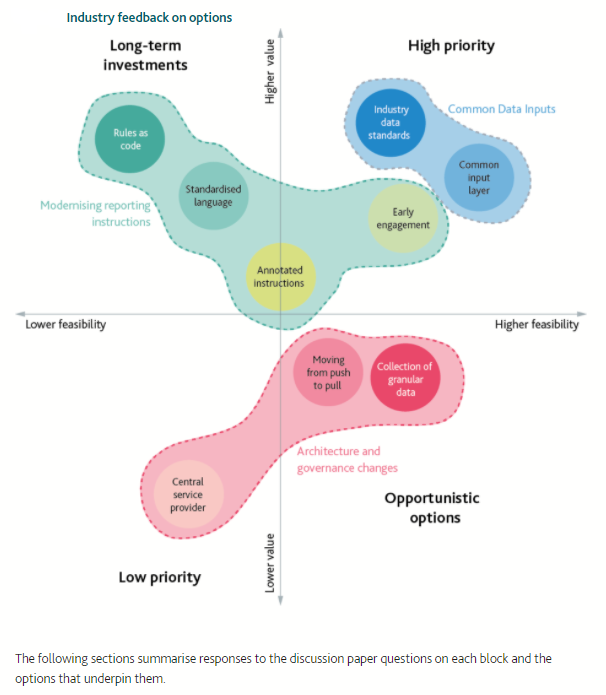Data collection has always been an integral part of what the Bank of England (BoE) does. Without the data we collect, we cannot identify risks, design good policy, and take action in a timely and targeted fashion.
But the BoE and systems it oversees are changing. Technological advances and automation mean that more data than ever before is being created and captured. Simultaneously, participants across the financial system, including authorities like central banks, expect more high quality, timely data to guide them in their decision making.
These changes have put strains on the current data collection process, and on the suppliers of data within the financial sector. They have increased costs, and meant systems and processes are being used in ways their designers never envisioned. But digitisation may also offer solutions to these problems. In 2019, in order to decide how to respond to these changes, the Bank committed to a review of data collection.
The BoE has published a paper of findings from that discussion process and next steps for the review.

The BoE’s vision is set out as: “The Bank gets the data it needs to fulfil its mission, at the lowest possible cost to industry’.
Key points:
Data collection can help deliver richer insights into emerging risks, faster, and the BoE will be able to confidently and precisely act to mitigate those risks. In doing so it enables us to respond to unpredictable micro and macro-economic events (from individual firm issues to economic shocks like Covid).
- Data collection is lean, so we and industry can make the most of our scarce resource. A lean approach to data should also flag when data sets are no longer useful and should be retired.
- Data collection continues to be reliable, so data is collected and used securely, accurately and appropriately.
- The process and purpose of data collection is clear: clear to industry why we want data; and clear to Bank staff what we need it for.
Working group members made several suggestions about what delivering the vision would feel like for firms. Their vision statements touched on a number of aspects of the process:
- Merging external reporting with internal reporting. Some members suggested that, in the future, their separate regulatory reporting roles and teams should no longer exist; instead, reporting should be fully consolidated within their everyday operating processes.
- Agile reporting. Some members saw the future of reporting as about the ability to rapidly deliver a reporting change. In this world the lines between setting up a new regular report and ad-hoc reporting become blurred.
- A combination of solutions. Some members felt a vision meant combining specific options discussed in our solution section. In particular some wholesale participants described a vision combining instructions as code, industry data standards, in addition to an improved industry and Bank engagement process.
- A framework for open collaboration. Some members emphasized that the vision meant deeper collaboration between us, firms, and their service providers. This deep collaboration was based on an eco-system of standards that allowed people and machines to talk more easily. Each standard could be developed independently to suit certain purposes or specific domains, but all standards should be developed and maintained under a common framework. The European CommissionOpens in a new window has explored this concept in the design of its ‘common data spaces’.
Members all agreed that, to achieve our vision, we need a fundamental transformation of how the data collection process works. To deliver this transformation, we think there are three crucial areas of reform: common data standards, modernized reporting instructions and an integrated approach to data collection.

